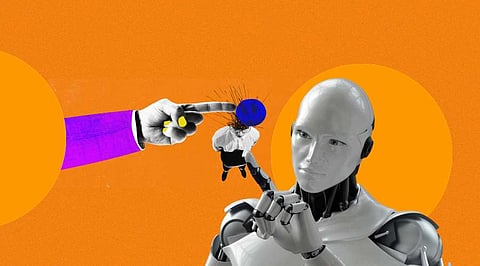

Humanitarian aid could undergo a revolution thanks to AI and robotics, which will increase reaction times, efficiency, and effectiveness in helping those in need. These cutting-edge technologies have the potential to significantly impact humanitarian efforts, healthcare delivery, and catastrophe response. With the use of machine learning algorithms, artificial intelligence is able to process and analyze enormous volumes of data from a variety of sources, including social media, satellite photography, and sensor networks. With the use of this skill, AI systems may more accurately discern patterns, spot abnormalities, and forecast future crises. Humanitarian organizations can foresee and lessen the effects of disasters by employing AI-powered prediction models, which enables improved preparation and response planning.
Robotics can be used for search and rescue activities in dangerous environments during catastrophe circumstances. Drones with cameras and sensors can survey damage swiftly, locate survivors, and provide vital information to relief agencies on the ground. The risk associated with rescue missions is decreased since these robots can visit locations that could be dangerous or inaccessible for human responders.
In humanitarian environments, AI and robotics can also simplify supply chain management and logistics. Essential supplies can be delivered to remote or disaster-affected locations using autonomous delivery drones or ground robots, avoiding infrastructural difficulties. AI-powered solutions can increase the effectiveness of relief efforts, ensuring that aid reaches individuals in need swiftly and effectively. They do this by optimizing routes, monitoring inventory levels, and assuring timely delivery. AI and robots can be utilised to prevent and control disease. AI, for instance, can be used to analyze health survey data to spot illness transmission patterns. Vaccines and other medical supplies can be transported by robots to far-off locations. AI and robotics can be used to remove landmines and other explosive hazards. This is a risky and challenging activity, but robotics and AI can make it safer and more effective.
Communities are destroyed by natural catastrophes like hurricanes, tsunamis, and earthquakes, which calls for an immediate reaction. Drones and robots with AI capabilities can be used to assess damage, locate survivors, and deliver vital supplies to inaccessible locations. These vehicles can easily traverse hazardous terrain, lowering the risk to human rescue crews and speeding up response times. Humanitarian organizations can proactively allocate resources and save lives by using AI algorithms to analyze real-time data to predict the onset and impact of natural catastrophes.
Join our WhatsApp Channel to get the latest news, exclusives and videos on WhatsApp
_____________
Disclaimer: Analytics Insight does not provide financial advice or guidance on cryptocurrencies and stocks. Also note that the cryptocurrencies mentioned/listed on the website could potentially be scams, i.e. designed to induce you to invest financial resources that may be lost forever and not be recoverable once investments are made. This article is provided for informational purposes and does not constitute investment advice. You are responsible for conducting your own research (DYOR) before making any investments. Read more about the financial risks involved here.
